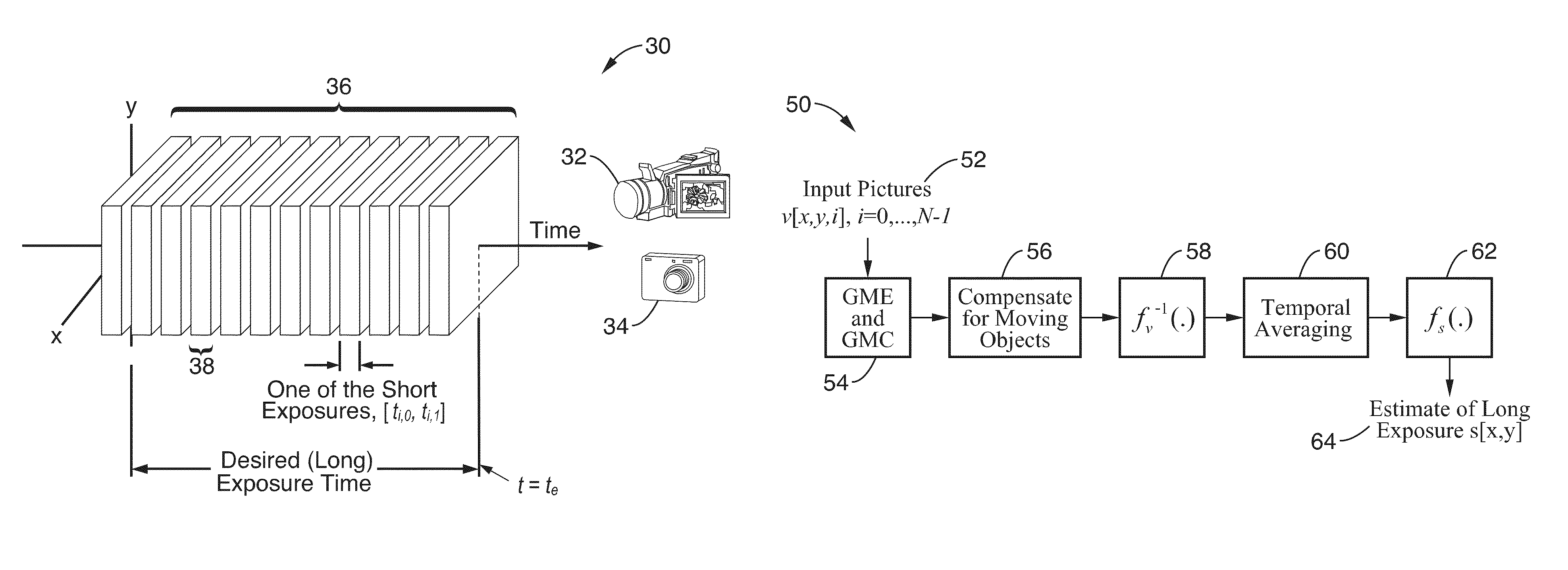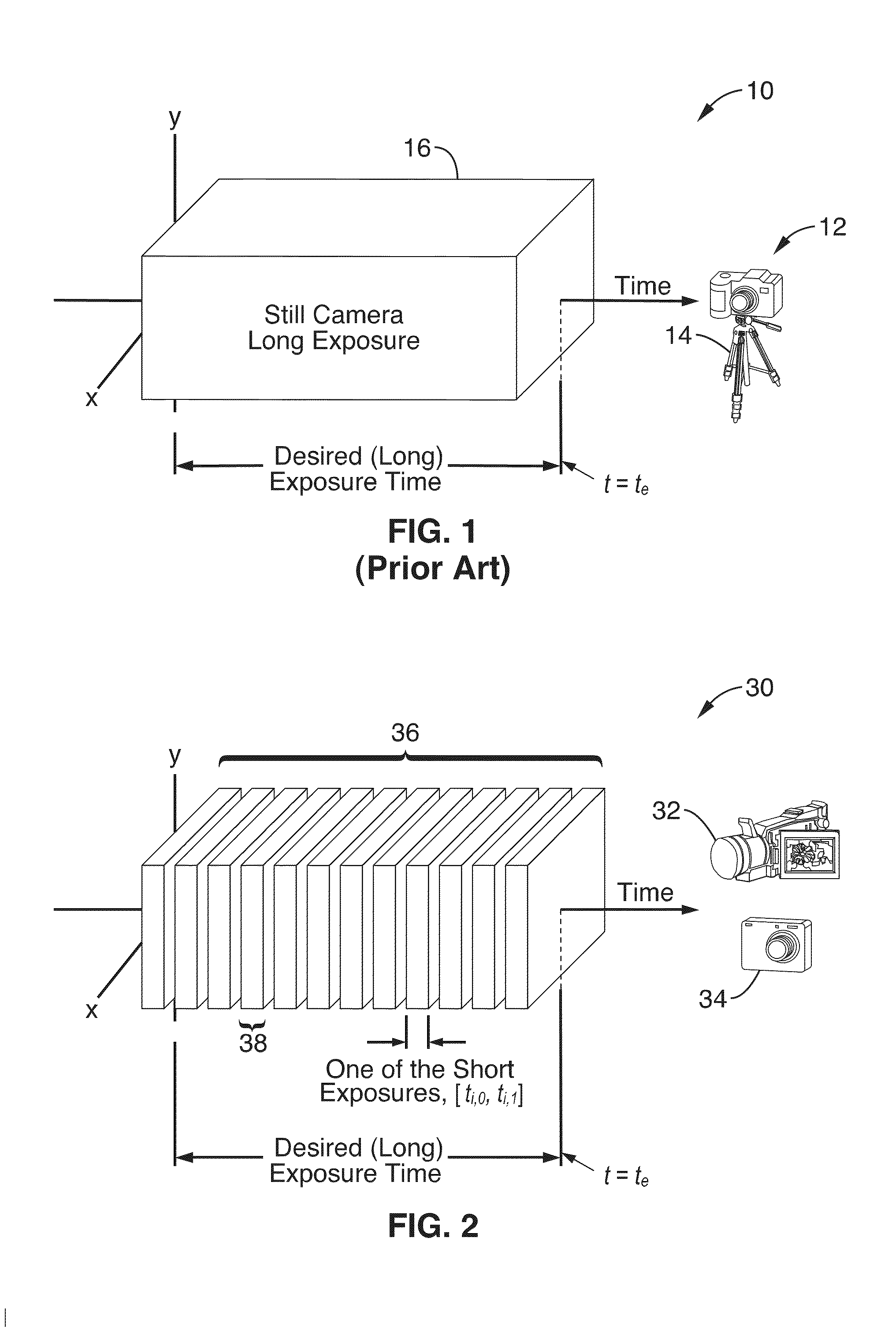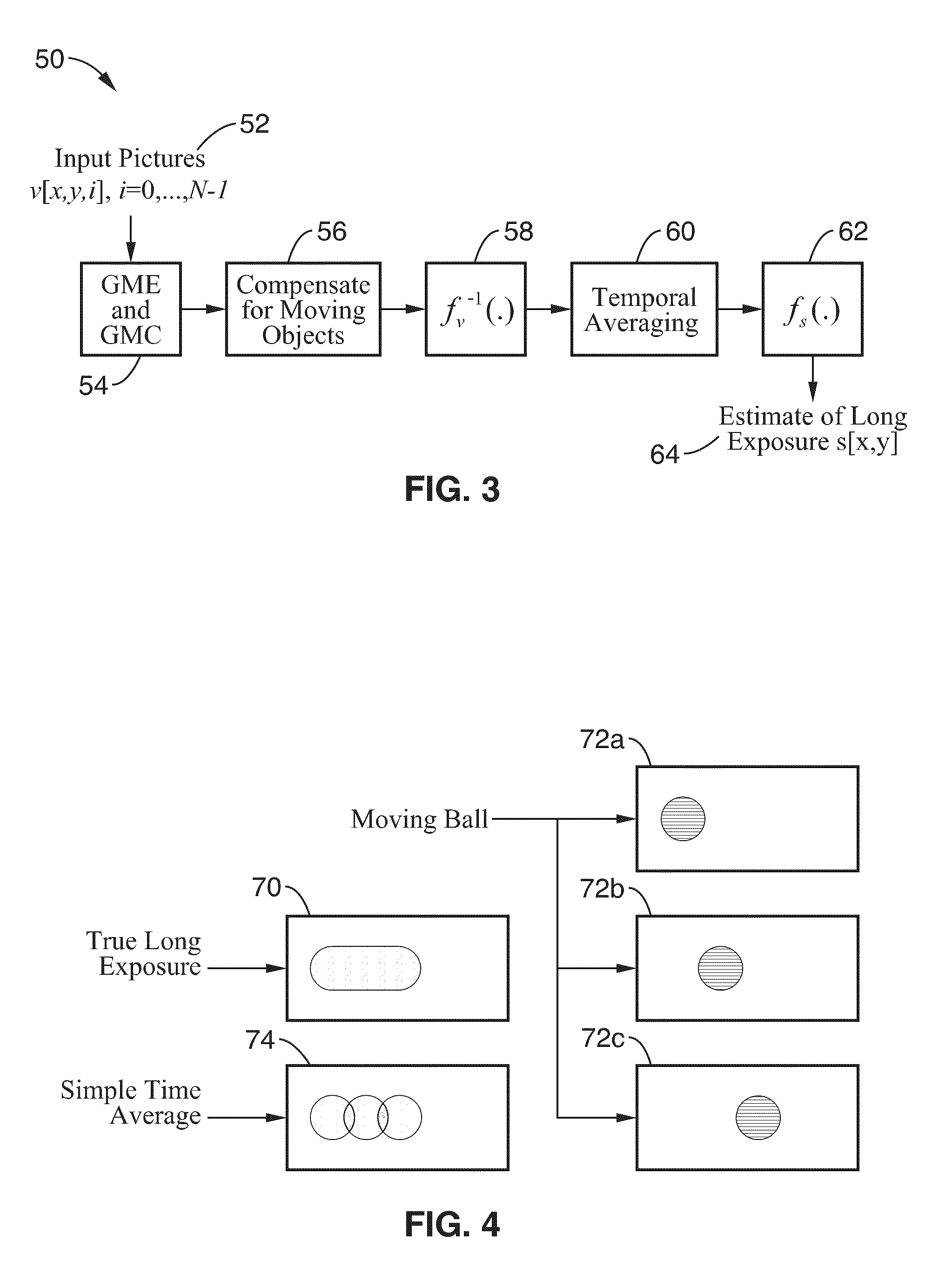Generation of simulated long exposure images in response to multiple short exposures
a technology of short exposure and long exposure still pictures, applied in the field of digital photography, can solve the problems of inability to take long exposure still pictures without the assistance of a tripod, inability to take creative possibilities, and inability to use camera controls, etc., to achieve highly precise camera equipment and control mechanisms. the effect of long exposur
- Summary
- Abstract
- Description
- Claims
- Application Information
AI Technical Summary
Benefits of technology
Problems solved by technology
Method used
Image
Examples
embodiment 30
[0066]FIG. 2 illustrates an embodiment 30 for generating a simulated long exposure image in a significantly different manner than shown in FIG. 1. In contrast to a conventional long exposure method, the present invention utilizes a camera (video 32, or still 34, or combination) for collecting a series of short exposure images 38 of a scene during a desired long exposure interval 36. It will be appreciated that each of these video exposures only captures image information over a subset of the total desired integration time. It should be recognized that cameras 32, 34, are utilized without the need of a tripod. Since the camera may be hand-held, there is also expected to be some camera movement causing misalignment of frames v[x,y,i] relative to each other and also relative to the desired long exposure s[x,y].
[0067]Accordingly, an object of the method can be asserted as follows:
[0068]Given: Individual still pictures v[x,y,i] i, i=0, . . . , N−1 with exposure times [ti,0,ti,1].
[0069]Es...
embodiment 1
[0145]2. An apparatus as recited in embodiment 1, wherein said long exposure image can span any desired simulated exposure time.
[0146]3. An apparatus as recited in embodiment 1, wherein stable long exposure images are created by said apparatus without necessitating use of a tripod, or other camera mount.
[0147]4. An apparatus as recited in embodiment 1, wherein said sequence of images comprise frames of a video sequence.
[0148]5. An apparatus as recited in embodiment 1, wherein said long exposure image comprises a digital still photograph.
[0149]6. An apparatus as recited in embodiment 1, further comprising compensating for apparatus motion among said sequence of captured images prior to combining the set of sequential images.
[0150]7. An apparatus as recited in embodiment 1, further comprising:
[0151]compensating for apparatus motion among said sequence of captured images prior to combining the set of sequential images; and
[0152]wherein said compensating comprises performing global moti...
embodiment 10
[0164]11. An apparatus as recited in embodiment 10, wherein stable long exposure images are created by said camera without necessitating use of a tripod, or other camera mount.
[0165]12. An apparatus as recited in embodiment 10, wherein said sequence of images comprise frames of a video sequence.
[0166]13. An apparatus as recited in embodiment 10, wherein said long exposure images comprise long exposure digital still photographs.
[0167]14. An apparatus as recited in embodiment 10, wherein said compensating for camera motion comprises performing global motion estimation (GME) and global motion compensation (GMC).
[0168]15. An apparatus as recited in embodiment 10, further comprising correcting for desired contrast and color balance after combining said sequence of images.
[0169]16. A method of creating a long exposure time still photograph from a captured sequence of short exposure images, comprising:
[0170]capturing a set of sequential images with a digital image capturing device, said se...
PUM
 Login to View More
Login to View More Abstract
Description
Claims
Application Information
 Login to View More
Login to View More - R&D
- Intellectual Property
- Life Sciences
- Materials
- Tech Scout
- Unparalleled Data Quality
- Higher Quality Content
- 60% Fewer Hallucinations
Browse by: Latest US Patents, China's latest patents, Technical Efficacy Thesaurus, Application Domain, Technology Topic, Popular Technical Reports.
© 2025 PatSnap. All rights reserved.Legal|Privacy policy|Modern Slavery Act Transparency Statement|Sitemap|About US| Contact US: help@patsnap.com



